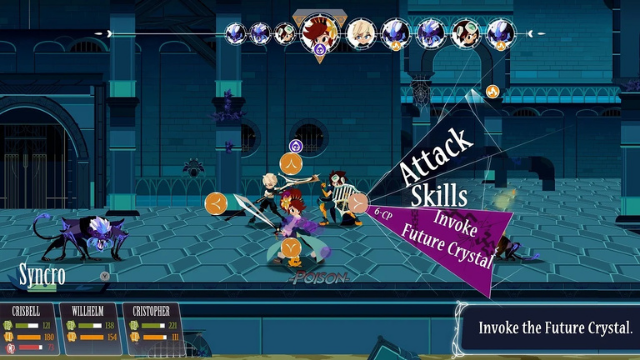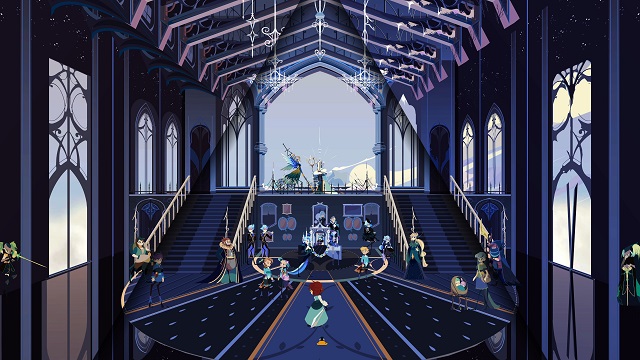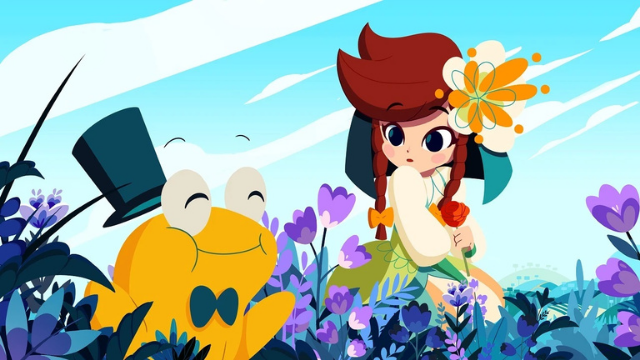Calling itself an “indie love letter to classic JRPGs,” Cris Tales comes onto the market during a time of modern innovation within the genre. But instead of embracing the modernity that some titles have, it instead returns to the ideologies of turn-based JRPG combat, slower-paced grinds, and heartfelt stories.
While some of its more unique mechanics would otherwise take Cris Tales to new heights, this genre rebel utilizes a few too many mechanics that have been weaned out of games for good reason, making it an unfortunate slog for some.
Even with those missteps, an incredible art style and a world that feels like something built from Double Fine’s brain trust make Cris Tales a spectacular JRPG for others.
Cris Tales Review — Time For A New Adventure
Playing as protagonist Crisbell is an absolute pleasure. Her happy-go-lucky attitude and aptitude for helping others make her endearing and compelling, and the cast around her is no different.
As a Time Mage, Crisbell has the ability to alter the temporal space around her to manipulate her surroundings. When a powerful Time Empress threatens to bring about a cataclysm across the region, it’s up to this eclectic cast to save the day.
While offering an oft-used plot, JRPG or otherwise, Cris Tales manages to keep things fresh and exciting through the use of time travel mechanics to solve puzzles, win fights, and change the world. These allow for far-reaching changes based on decisions you make and are made even more interesting because you can often see the three periods of time you’re working with all at once.
The left side of the screen shows the past, the middle the present, and the right the future. With these lenses, you can see what once was and what is to be, allowing for, among other things, the complexity of the puzzles to hit just right throughout the story.

Likewise, combat is made more thought-provoking, as you manipulate enemies through time via different methods. Getting an armor-clad enemy knight wet before sending them into the future causes the armor to rust, thus allowing you to inflict damage on them.
These combat sequences are engaging, but the lack of enemy diversity means you will begin to monotonously run through enemies without thinking —bringing you back to the old-school grinding that many today loathe when comes to JRPGs.
Additionally, the combat mechanics are generally pretty standard and uninspired, with elemental attacks being the most interesting portion. Party members take turns entering the fray, where your standard fare of attacks and defensive moves, and stances can be taken. Besides utilizing a parry to lessen enemy blows, it’s a laid-back experience that many will find dull rather quickly.
Add in the fact that difficulty is oftentimes “increased” by simply adding more hit points to the base set of enemies you’ve already seen, and you’re left with wading through boring combat sequences that last even longer.
On the flip side, time travel makes side quests even more precious than what you’d hope for from your standard RPG. Always where a lot of the charm in an RPG is found, these side quests don’t disappoint, as solving problems around the region change the future outcomes for some locations and people, allowing for real change to ripple out of the effort you put into completing them
As your character levels, they learn skills that can be assigned to your party members which will help in fights, but each simply consists of stranger attacks, or healing powers, as well as the occasional status effect move. It’s pretty bare-bones for an RPG, but gives enough customization to allow you to manage how you’d like to go into fights, even if those fights continue to stay pretty uninteresting outside of boss fights.
Aesthetically, Cris Tales is one of the better-looking JRPGs out there. The simplistic, cartoon art style exudes charm and pleases the mind, while the colorful landscapes and character designs make the areas even more enjoyable. Paired with good performance and a 50-hour playtime, there’s a lot to look forward to when jumping into Cris Tales.
Cris Tales Review — The Bottom Line

Pros
- The art style is better than most games on the market — simply beautiful
- Long playtime on offer allows players to really sink into this incredible world
- Time travel mechanics are unique and interesting
Cons
- Combat is very standard and uninspiring
- Skills and RPG systems stay pretty simple.
- Enemy types lack diversity and difficulty enters bullet-sponge territory
Cris Tales has a top-notch art style and an eclectic cast of characters that all players will come to love. Pairing that with time manipulation mechanics and a beloved genre, Cris Tales could have been one of the better games to come out of 2021.
Unfortunately, a lack of diverse enemy types, standard combat, and some questionable difficulty progression outweigh the highest highs, making Cris Tales feel too out of place alongside its cohorts.
[Note: Modus provided the copy of Cris Tales used for this review.]







Published: Jul 28, 2021 08:19 pm